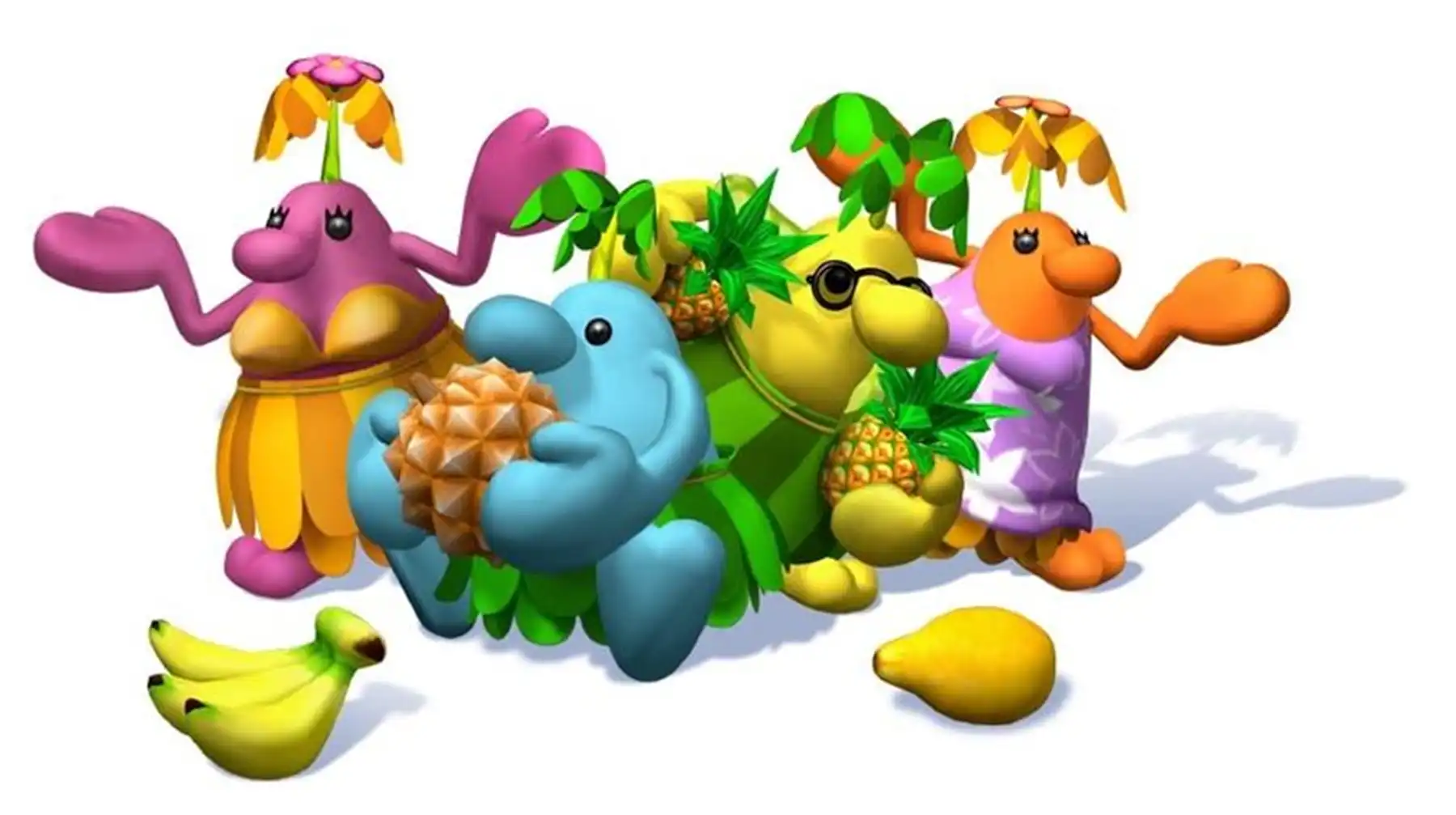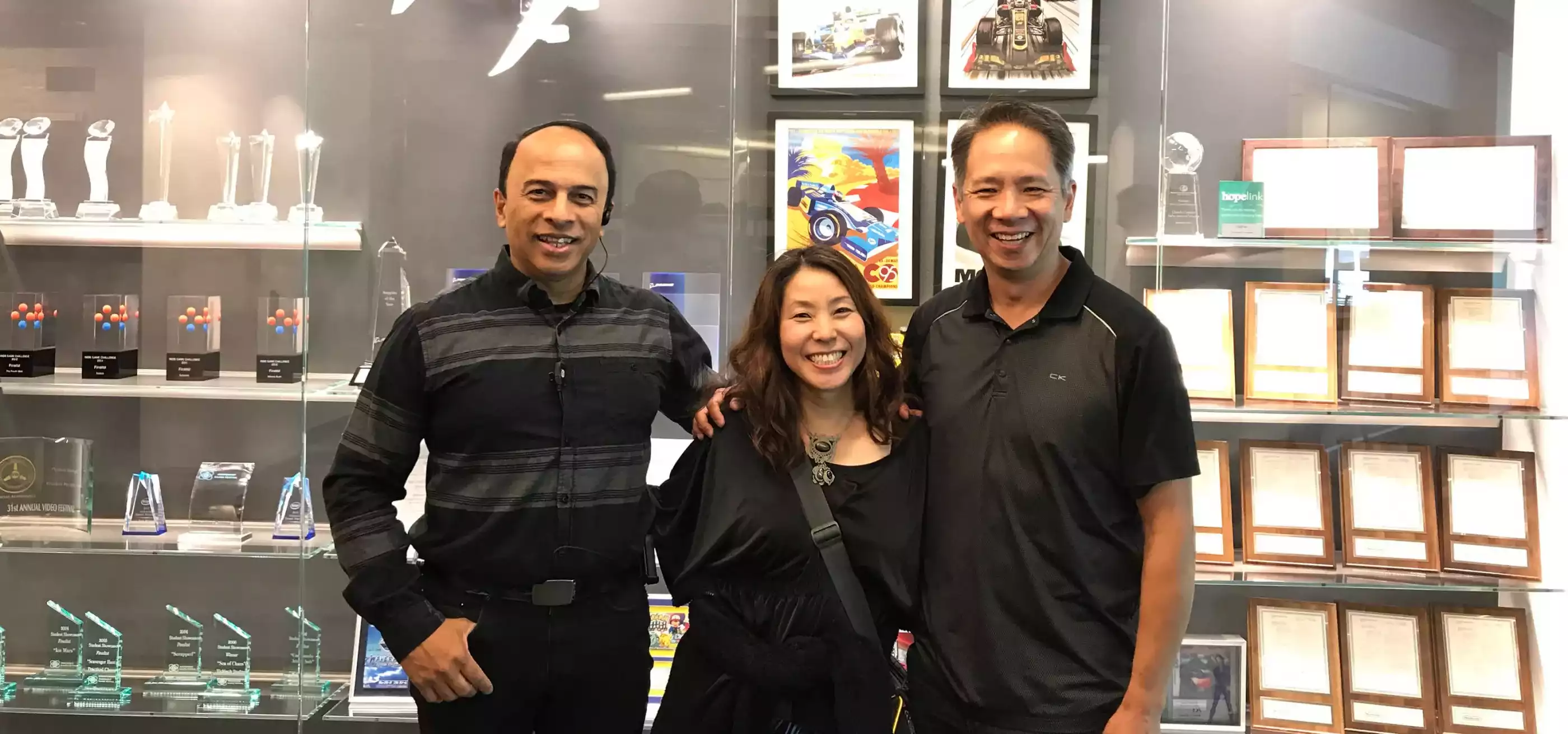Satomi Asakawa, a 1998 graduate of DigiPen’s 3D computer animation program, designed and animated some of Nintendo’s most iconic NPCs over her 15-year career there. In Part 1 of our interview with Asakawa, she recounted her days at DigiPen, the language barrier she overcame to earn her degree, and her DigiPen short film, One Big Banana, that landed her a job at Nintendo’s Japan headquarters.
In Part 2 of our interview, Asakawa outlines the development of her personal philosophy on NPC design, her recollections of life at the Nintendo offices, and the inspirations behind her work on memorable characters from The Legend of Zelda series, Super Mario Sunshine, and more.
Special thanks to Naomi Abe for assistance with Japanese translation.
What were your first years like at Nintendo? Also, what was it like having your first assignment be The Legend of Zelda: Ocarina of Time, a game that still feels so enormous two decades later?
Nintendo had just released the Nintendo 64 at that time, and I think that a lot of 3D animators were being hired to work on Pokémon Stadium. I think I was one of them. At that time, there were not many people with that skill set in Japan, so I think I just got really lucky. The company also specifically needed an artist to create environmental animal characters in The Legend of Zelda: Ocarina of Time, so I was hired because of my monkey animation movie, and I joined the NPC team.
NPCs play an important role in creating the atmosphere of the game, so to me, I saw it as my job to really breathe life into these characters.”
The Zelda team’s staff, including [director and producer Eiji] Aonuma-san, were all very talented, fun, and empowering. They all had crazy, unique personalities! I also like to have fun, and I’m a little crazy and unordinary, so I fit in. After Ocarina of Time, I was involved in the making of several Zelda games with all the rest of the crazy warriors on the team. The Nintendo project teams basically get along like family.
You have designed and animated so many memorable NPCs in classic Nintendo series like Zelda, Pikmin, and Mario, many of whom stand out because of how delightfully strange they are. In another interview you mentioned that before you came to DigiPen, you studied surrealist art. Did surrealism influence your approach to character design and animation at Nintendo?
I was very passionate about creating strange and surprising characters. I think that area of my work is influenced by surrealism. I enjoyed creating really crazy characters, not just ordinary people. Like the enemy characters in Pikmin, I was allowed to do whatever I wanted, so they’re very strange! We were able to create with tremendous freedom, because the world of Pikmin was a whole new world. Even still, [renowned Nintendo game designer and producer Shigeru] Miyamoto-san was very strict in checking specifications on them all. Pikmin was one of the last times that artists were totally entrusted with creating everything on a game from character designs, specifications, direction, and animation. It was a lot of fun!
What’s your personal philosophy on designing good, meaningful NPCs?
I think good NPC characters should be the same as people you meet in real life. Some people have strong personalities, some have funny personalities, etc. I always tried to make them really memorable characters, not just messengers for your progress in the game. NPCs play an important role in creating the atmosphere of the game, so to me, I saw it as my job to really breathe life into these characters.
In Twilight Princess, not only were you the main NPC designer, we also read that you had a lot to do with designing the funny side quest with the shop that’s so outrageously expensive, it’s impossible for Link to buy anything at first. Was it common for you to step outside your explicit role as a character designer and animator at Nintendo?
Since Nintendo did not have enough production staff at the time, it was necessary for a single artist to do everything from character design to modeling, animation, and even general game direction. It was very fun and interesting! But nowadays in the video game industry, there’s more division of labor. I think that I worked there during the last era when an artist got to do all those different kinds of work.
Can you talk about what it was like designing the Piantas for Super Mario Sunshine? They seem like a unique assignment since, rather than being individual characters, they’re an entire people who inhabit the world of the game.
When I was tasked with creating the Piantas, I had various memory limitations. I wanted to put a lot of NPCs in the game, but with those limitations, I had to really think hard about how I could make that happen!
With the Piantas there are basically two models for men and women, and we devised a few variations between them in the color of the body, hats, hair accessories, and size. We also needed to make sure the textures for them were minimal so we could achieve those faster memory reads.
On this project in particular, I was very intent on figuring out how I could make all of this happen! How many bones could I put in the character rig? How many textures can we use? How few polygons can I use in the character model to get lots of characters on screen? I was very passionate about figuring out how simple we could make the rigs and how to scale the animation so we could still get smooth and lively character expressions, even with fewer joints to work with.

Shigeru Miyamoto is such a video game legend! What was it like working directly with him?
Mr. Miyamoto is a very friendly and fun person. He’s also good at guitar. He actually formed a guitar club with the rest of the development staff. He even played guitar at my wedding — such a nice boss! The Nintendo staff loves to play music, and a lot of them play so well that they sound professional.
But when it comes to game production, Mr. Miyamoto is very observant. He knows what to change in a game more than anyone else — he really plunges into his work that way. Even if you’re right in the middle of the game production process, he will not hesitate to make really big changes. Sometimes we would have to totally redo our work projects to make something better or more interesting for the video game.
But usually he is a wonderful, kind person who is very attentive and considerate with his employees, a very fun and interesting guy.
On Ocarina of Time, I got directions from Mr. Miyamoto to make an enemy that flies in the sky named Guay. After that, he became more of a central director, so the last character I made getting directions straight from him was Guay.
After retiring from Nintendo, you opened up a therapy business. What made you decide to transition away from video games and into the field you’re in now?
There’s a lot to it, but the major thing is that I realized mental health management is the key to your overall long-term health at work. The employees who come to Nintendo are very good at what they do, and they’re great workers. But it also takes a lot of time and effort to make a game. I used to talk with some of my colleagues and coworkers and became a sort of counselor for them. So in the office, not only was I an artist, I was also playing a role in some staff’s mental care. I gradually learned more about mental health and therapy, but at the company, I myself was also overwhelmed by all the work I needed to do as an artist. So I couldn’t really allocate too much of my time to being a therapist for my coworkers!
I wanted to be a wizard and a healer! So, I retired from being a warrior and chose the therapist’s way.”
Even in RPG games, the warriors in your party can’t just continue on the journey forever. There are wizards and healers in the party, and only with them can HP and MP be recovered so that the game’s journey can be continued. I wanted to be a wizard and a healer! So, I retired from being a warrior and chose the therapist’s way.
Finally, what advice would you give to students today who are eager to get into the video game and animation industry themselves?
Always put your antenna out to get more information about the world. Pursue different experiences and travel. Meet lots of different people. Try to get ideas and inspiration from things other than games. Try out new things! Also, just know that what you build from now on will continue to develop further and further, and if you keep going, you will be able to create more and more new, exciting things.
